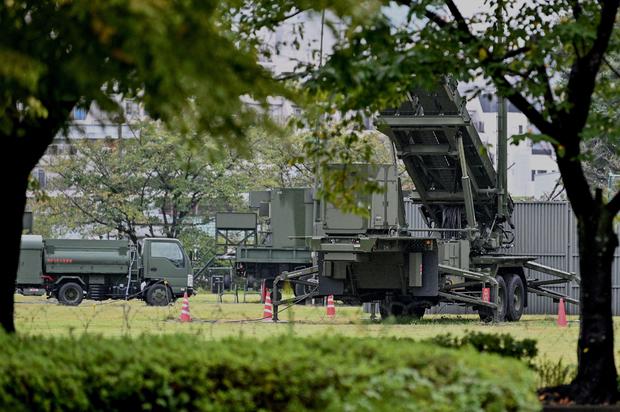North Korea launched two more ballistic missiles Thursday morning, one of which landed in the Sea of Japan, U.S. officials confirmed to CBS News. The second missile landed in North Korea, the officials said.
It’s unclear if Thursday’s launches were in direct response to the announcement Wednesday that the U.S. aircraft carrier USS Ronald Reagan would return to waters east of South Korea. The carrier was part of drills last week with South Korea and Japan.
South Korea’s Joint Chiefs of Staff said in a statement that the two missiles were launched from Pyongyang about 22 minutes apart in the direction of the Sea of Japan.
“North Korea’s successive launch of ballistic missiles is a serious provocation that harms the peace and stability of not only the Korean Peninsula but also the international community, and it is a clear violation of the ‘UN Security Council resolution,'” the Joint Chiefs of Staff said. Japanese Prime Minister Fumio Kishida also confirmed the North Korean missile launches, saying the weapons firings are “absolutely intolerable.”
The launches were the North’s sixth round of weapons firings in less than two weeks, which has prompted condemnation from the U.S. and other countries. It also came just two days after North Korea fired an intermediate-range missile over Japan for the first time in five years. Foreign experts said the missile fired Tuesday involved a weapon capable of reaching the U.S. Pacific territory of Guam and beyond. The country has fired nearly 40 ballistic missiles over about 20 different launch events this year, exploiting Russia’s war on Ukraine and the resulting deep divide in the U.N. Security Council to accelerate its arms development without risking further sanctions. Debate over how to handle Tuesday’s missile launch over Japanese territory split an already deeply fractured U.N. Security Council on Wednesday, with Russia and China insisting that U.S.-led military exercises in the region had provoked North Korea into acting.
Wednesday’s session ended with no agreement on next steps, despite warnings from the U.S. and its allies that the council’s inability to reach consensus on North Korea’s record number of missile launches this year was emboldening North Korea and undermining the authority of the United Nations’ most powerful body.
The North’s flurry of weapons tests in recent days came after the U.S. staged military drills with South Korea and Japan in the waters off the Korean Peninsula’s east coast.
The drills on Tuesday were conducted to show a joint ability to deter a North Korean attack on the South. The allies conducted training bombing runs by F-15 strike jets using precision munitions and launched two missiles each that are part of the Army Tactical Missile System. However, one of South Korea’s ballistic missiles malfunctioned and fell on land during the drill, with sound of the blast and subsequent fire triggering panic among residents in the coastal city of Gangneung. North Korea views such drills as an invasion rehearsal. The country launched its own missile hours before the drills in its most provocative demonstration since 2017. The nuclear-capable ballistic missile that was launched has a range capable of striking Guam, which is home to one of the largest military facilities maintained by the U.S. in Asia. North Korea in 2017 also tested missiles capable of hitting the continental United States. After Tuesday’s launch, the United States, Britain, France, Albania, Norway and Ireland called for an emergency meeting of the U.N. Security Council.
This article was first published in CBS News . All contents and images are copyright to their respective owners and sources.












